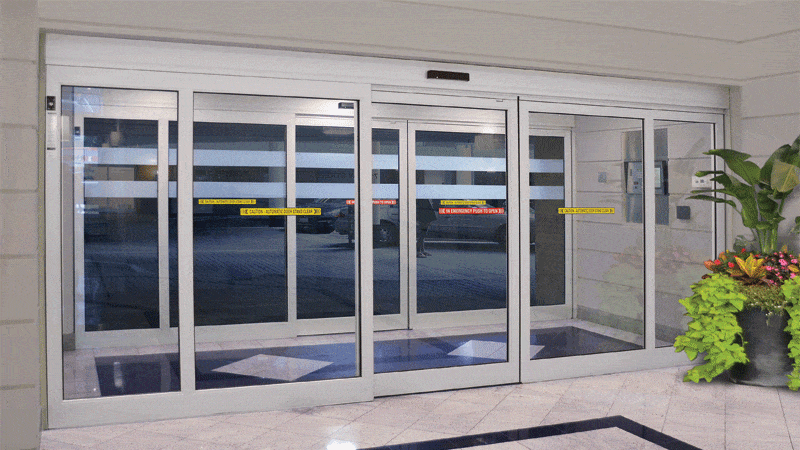What Is The Standard Size Of A Commercial Door?
Introduction
When it comes to commercial spaces, doors play a pivotal role in functionality and aesthetics. They serve as gateways to businesses, ensuring security while also enhancing the overall look of the establishment. But have you ever stopped to think about what the standard size of a commercial door actually is? Well, you’re in for a treat! In this article, we’ll delve deep into everything you need to know about commercial doors—specifically their sizes, types, materials, and so much more.
Let’s kick things off by getting right into it!
What Is The Standard Size Of A Commercial Door?
When discussing commercial doors, one of the first questions that comes to mind is: "What is the standard size?" The answer isn’t quite as straightforward as one might hope.
Common Dimensions of Commercial Doors
Generally speaking, the most commonly used sizes for commercial doors are:
- 36 inches wide by 80 inches tall (the standard)
- 48 inches wide by 84 inches tall (for wider openings)
- 60 inches wide by 84 inches tall (for larger entries)
These sizes are often used in various industries ranging from retail stores to offices.
Why Do Sizes Matter?
Understanding the dimensions of commercial doors isn’t just an academic exercise; it has real-world ramifications. For instance:
- Accessibility: Businesses must comply with ADA (Americans with Disabilities Act) guidelines which dictate certain minimum widths for doorways.
- Aesthetic Appeal: A mismatched door size can throw off the entire design of a building.
Variances Based on Type
Not all commercial doors are created equal. Depending on whether you're looking at hollow metal doors or wood doors, dimensions may vary slightly.
Types of Commercial Doors
Hollow Metal Doors
Hollow metal doors offer durability and security—perfect for environments that require heavy foot traffic.
Wooden Commercial Doors
Wood adds an elegant touch but requires more maintenance than metal options.
Glass Commercial Doors
Glass doors provide visibility and can enhance customer engagement but may lack security features.

Fiberglass Doors
Fiberglass offers insulation benefits and can mimic wood without the maintenance woes.
Rolling Steel Doors
Ideal for warehouses or industrial spaces, rolling steel doors are perfect for large openings.
Key Factors Influencing Door Size
Building Codes and Regulations
Local codes may dictate specific requirements based on building type or occupancy levels.
Functionality Requirements
Will your door be a primary entrance or merely a service entry? Understanding its purpose will influence size decisions.
Aesthetic Considerations
The design flow of your business plays a significant role in determining door size and style.
Commercial Door Hardware: An Overview
When choosing a commercial door, hardware matters just as much as size. Here’s what you need to consider:
Locks and Latches
Options range from simple knob locks to sophisticated electronic systems.
Hinges
Heavy-duty hinges are essential for high-traffic areas where wear and tear could become an issue.
Installation Tips for Commercial Doors
Getting your door installed correctly is crucial. Here’s how to do it right:
Maintenance Tips for Longevity
To keep your commercial doors looking great and functioning well:

- Regularly lubricate hinges.
- Inspect seals for wear.
- Clean surfaces regularly to prevent buildup.
How To Choose The Right Size For Your Business?
Choosing the right size involves several considerations:
FAQs
1. What is the most common width for a commercial door?
Typically, a width of 36 inches is standard for most commercial applications.
2. Are there regulations regarding commercial door sizes?
Yes! Building codes often mandate specific sizes based on safety regulations like ADA compliance.
3. Can I customize my commercial door size?
Absolutely! Many manufacturers offer customizable options based on your needs.
4. What materials are best suited for exterior commercial doors?
Hollow metal or fiberglass tend to perform well against weather elements while offering security.
5. How often should I maintain my commercial doors?
Regular inspections every few months are advisable to catch any potential issues early on.
6. Where can I find quality commercial doors in Rochester?
You can find excellent options at local suppliers specializing in commercial doors Rochester; they often have knowledgeable staff who can guide you through your choices!
Conclusion
So there you have it! Understanding what the standard size of a commercial door is just scratching the surface when it comes to selecting the best option for your business needs. With numerous types available—ranging from wooden beauties to robust steel gates—and plenty of factors influencing their selection, it's crucial you approach this choice Rochester commercial door services thoughtfully.

Remember: it’s not just about choosing any old door; it's about picking one that complements your space while meeting practical requirements like safety and accessibility standards! There’s so much more than meets the eye when it comes down to those unassuming entrances we walk through every day!
Feeling overwhelmed? Don’t sweat it! Just take a deep breath, consult professionals if needed—especially if you're located near commercial doors Rochester—and you'll find just what you're looking for!
Now go ahead—make that informed choice today!